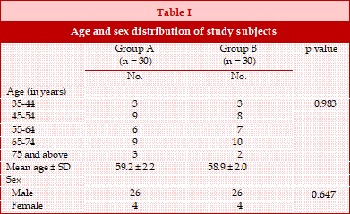Effect of mean ocular perfusion pressure on primary open angle glaucoma
DOI:
https://doi.org/10.3329/bsmmuj.v11i4.38618Abstract
Primary open angle glaucoma is the most common form of glaucoma and it remains asymptomatic until the late stage of the disease. The purpose of this study is to compare the mean ocular perfusion pressure with the primary open angle glaucoma. A total of 60 study subjects were divided into two following groups: a) newly diagnosed patients with primary open angle glaucoma (case) and b) age and sex-matched healthy volunteers (control). The intraocular pressure and blood pressure were measured 3 hourly from 8:00 am to 11:00 pm. The mean ocular perfusion pressure of the right eyes in untreated primary open angle glaucoma was 39.9 ± 7.5 mm Hg whereas it was 47.7 ± 7.7 mm Hg in the control. The odds ratio was 6.6 (95% CI, 2.1-20.5; p=0.002). The right eyes of untreated primary open angle glaucoma had 6.6 times more risk compared to the control group. The mean ocular perfusion pressure of left eyes in untreated primary open angle glaucoma was 39.9 ± 7.5 mm Hg and 48.6 ± 4.0 mm Hg in the control group. The odds ratio was 5.7 (95% CI, 1.8-17.5; p=0.004). The left eyes of untreated primary open angle glaucoma had 5.7 times more risk compared to control group. The findings revealed the evidence of vascular mechanism in glaucoma pathogenesis: Reduction of mean ocular perfusion pressure ≤48 mm Hg, may lead to daily repetitive ischemic insult to the optic nerve.
Downloads
212
145 Read
24

Published
How to Cite
Issue
Section
License
Copyright (c) 2018 Pallab Kumar Sen, Nazneen Khan, Md. Shafiqul Islam

This work is licensed under a Creative Commons Attribution-NonCommercial 4.0 International License.



